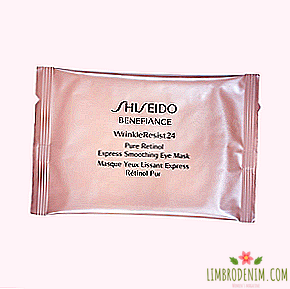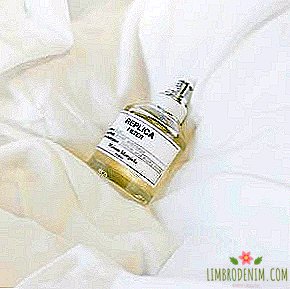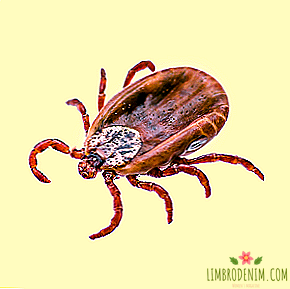Sugi, Yuzu, Kodo: 9 fragrances dedicated to Japan
Text: Ksenia Golovanova, author of the telegram channel Nose Republic
Japanese culture is rich not only the ancient art and amazing traditions that the Japanese carefully protect from extinction, but also smells: sakura and wasabi are not limited to. We asked our perfumer critic Ksenia Golovanov to choose aromas that tell about olfactory Japan as close as possible to the text.
Tokyo bloom
The Different Company
9800 rub.

The famous photographer Yoshinori Mizutani has a series of works "Yusurika" - as the Japanese call small and harmless mosquitoes-bells. In the spring, when Tokyo pours rain, they swarm over the rivers and produce a thin, melodic ringing with their wings, and the quick movement in the air causes ghostly spots on the Mizutani pictures drenched in soft, milky light. Tokyo Bloom - nasturtiums, basil, dandelions in the river flood plain, the most delicate perfumery galbanum of all that is - shares its delicate colors with "Yusurika": greens, mist over water, pink chalk on urban asphalt. Here you have a spring in a big city.
Scent Three: Sugi
Comme des Garçons x Monocle
8950 rub.
for 50 ml

A curious fact: sugary pollen, or cryptomeria, the national tree of Japan, is the main cause of pollinosis in the country. In the spring, when golden pollen rushes through mountains and valleys, the Japanese together put on hygienic masks and take antihistamines, while in the rest of the seasons they smell sugi and everything made of its fragrant wood - and this is perhaps half the country. In Sugi, Antoine Mesondier does something deceptively simple, but ingenious: he brings an already cool, slightly menthol woody chord with an ice orris - and just walks to the side, watching the icy cloud freeze in the air. Beautiful and a little scary.
Yuzu fou
Parfum d'empire
10 500 rub.
for 100 ml

With popular citrus, yuzu in Japan flavors just about everything from cold noodle broth for breakfast to hot spring water. There is even a special winter "uravadza" - as the Japanese call the little tricks that are actively used in everyday life - prescribing to clean and dry the skin of a few yuzas, put it in a muslin bag and let it float freely in the bath. Yuzu essential oil, firstly, accelerates blood circulation well, and secondly, forms a thin film on the surface of the water, which is why it cools for a long time. Yuzu Fou, on the contrary, is an excellent antipyretic: a bitter and a spicy caustic citrus chord rests on the company's base of the perfumer Marc-Antoine Cortiquito, cool and mossy, like a green egg in a nest.
PG9.1 Komorebi
Pierre guillaume
€98
for 50 ml

In Japanese, for the presentation of complex natural events, which we usually describe in whole paragraphs of the text, there are many compact and very precise words. For example, Komorebi - as the Japanese call sunlight, breaking through the dense cover of foliage in the forest. It consists of several parts, hieroglyphs: "tree", "sun" and "seeping." The perfumer Pierre Guillaume follows this structure literally: the light in Komorebi runs a beautiful mimosa, the trees give a juicy chord of green leaves with violet and currant shade, and something smoothly mobile that conveys the idea of fluidity, fresh, air ozone that fills all the composition’s holes.
Desired earth
The harmonist
22 000 rub.
FOR 50 ML

Distributors were swarming around the spring perfume exhibition in Milan around the new brand The Harmonist. Which is understandable - the bottles are good, the legend is also good. As a result, the brand landed in the portfolio of a young and so far small Zagalia company, and will stand up at TsUM - the corner opens on December 6th. What you need to know about The Harmonist: firstly, the brand is inspired by the basic principles of feng shui, secondly, it belongs to Lola Tillyaeva, the youngest daughter of the first president of Uzbekistan Islam Karimov and, in her own words, a big fan of these practices.
With them, the owner of the brand has a place to turn around: Tillyaeva owns many beautiful houses all over the world - from Geneva to Los Angeles, according to the photo, very feng shui. In a word, it is clear that they do not save on The Harmonist - there is no such need. And indeed, perfume smells in a good way expensive: in Desired Earth, for example, a perfectly beautiful siso, or perilla, is Japanese mint, which has a grass-green, slightly cinnamon flavor with a touch of tea. This rose on volcanic ash and gives away minerals and ash from ancient forests.
Dark Amber & Ginger Lily
Jo malone london
22 000 rub.
FOR 50 ML

Jo Malone's best fragrance is dedicated to Kodo incense - one of the so-called three main arts, along with ikebana and tea ceremony. Japanese incense is an order of magnitude more delicate than Indian: rituals do not use the bamboo sticks we are used to, but woody, such as sandalwood or wood chips, which are heated in a small bowl. In Dark Amber & Ginger Lily dark wood - imagine lacquered caskets, intricate lattices in the windows, fragrant twilight in the corners of the tea room - white specks of wax lilies sparkle: who needs incense when there are flowers?
Do ± Washi
Uermi
9000 rub.
for 50 ml

It is impossible to overestimate the importance of washi, durable hand-made paper for Japanese culture: it was used for calligraphy, it was covered with sliding doors in houses, and during the war they even made “fu-go” shells - balloons with bombs out of paper sheets. Washi Italian brand is unlikely to blow your imagination: it is a calm musky-floral aroma, clearly inspired by nijimi - an effect in which the ink spreads around the line drawn by the master, forming a semblance of halo. Here dairy musk "absorbs" the pale shades of peonies and lilacs, like paper - paint, and only a light blush acquires.
Macaque
Zoologist
$145
for 60 ml

There are two "Japanese" flavors in the Zoologist line: the floral chypre Nightingale and Macaque - an intensely green, astringent composition with woody and fruity undertones. It is dedicated, as the name implies, to the Japanese macaque, a monkey that lives in mountain forests, splashing in hot springs and, according to local beliefs, protects mountain temples from evil spirits. Starring here is a biting, bitter galbanum and cedar; The panorama of the evergreen Japanese forest that they create is remarkably believable — as if you are observing the camera’s slow passage over the treetops. Everything that happens next is also green: yudzu, sour apples, jasmine tea, measured, full of dignity, crunch-stump shoots and rhizomes. This macaque does not beg for bananas from a tourist — she is, after all, a temple beast, part of the Japanese cultural heritage.
Kimonanthe
Diptyque
13 900 rub.
for 100 ml

Apricot-leather, animalistic aroma of osmanthus is one of the main smells of the Japanese autumn, especially its first half. In Japanese, osmanthus sounds like "kinmokusey" or "ginmokusey" ("silver" is the so-called variety with white flowers - and "golden", respectively), and also "chicken" or "smell of nine ri." That is, about 35 kilometers - the name comes from times when the air in Japan was still very clean and one bush of osmanthus could easily aromatize a whole area. In the French Kimonanthe Diptyque, the affected area is more modest: strictly speaking, this is a classic skin scent, that is, a fragrance sitting close to the skin. What in general corresponds to the idea of aroma - to convey the smell of osmanthus and fine Japanese zuko incense, wood powder, which is used to cleanse hands and clothes when entering the shrine. However, the holiness in Kimonanthe was unaffected: the animal spirit of golden flowers easily overcomes it, like unclean thoughts — a bad head.
PHOTO: articoli, rivegauche, hbb24, pierreguillaumeparis, tsum, lanecrawford, beautydrugs, zoologistperfumes, libertylondon




